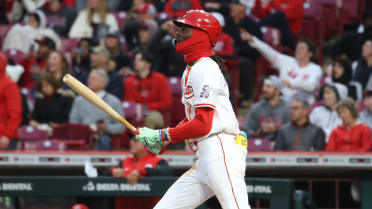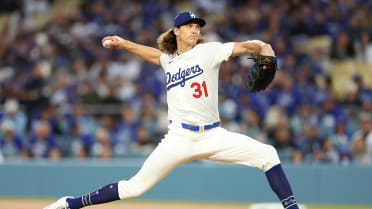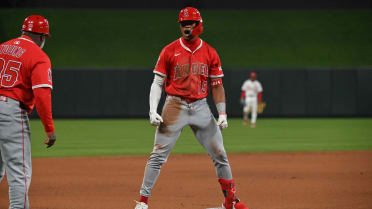In Part 3 of an extended Q&A with Mets general manager Sandy Alderson, he discusses the state of analytics. Read Part 1 here and Part 2 here.
MLB.com: Sabermetrics and analytics have become a huge influence in the game over the past 10, 15 or 20 years. You were there at the beginning of it. Moneyball, everybody points to that, but you guys were doing it before then. How did you first discover some of these analytics? And what gave you the belief that they were so important?
Alderson: It goes back to my inexperience at the outset of my baseball career. Because I wasn't a scout, I didn't really have a traditional way of evaluating players. I was pretty open to alternatives that were maybe more accessible to me. That's where analytics came in.
:: General manager Q&As ::
What got me started was listening to a radio piece on National Public Radio by someone who was local in the Bay Area and had written a small book called "The Sinister First Baseman." His name was Eric Walker. This was about the time that Bill James was writing as well. I was intrigued by it. It seemed to be that some of the thesis, the importance of on-base percentage and things like that, seemed to be borne out mathematically. It was also consistent with my parochial view of baseball, which was, "Hey, I love home runs anyway." I recall the advocate for the three-run home run was the manager for the Orioles, Earl Weaver, and the advocate for small ball was Gene Mauch, who managed Philadelphia. The Weaver approach appealed to me emotionally as a fan, but the analytics seemed to prove out. When that started, that was probably 1982-83.
• Spring Training: Info | Schedule | Tickets | Gear
MLB.com: You talked about the importance of analytics and the importance of scouting. Do you think league-wide scouting has become less important to teams than it has been in the past? Or do you think it's as important, but analytics have caught up?
Alderson: If you look at the general managers who have been appointed over the last few years, it would seem that analytics has surpassed subjective scouting, because those who are in decision-making positions have more of an analytical background. I think at the same time, though, there's a growing recognition that the numbers themselves don't tell the whole story.
By the way, analytics are themselves subjective in many ways. What analytics really do is collate data and then interpret the data. When you interpret the data, you inject your own subjective point of view, because you have to weigh things. All data isn't equal. Different clubs have different views of how that data ought to be used. Nothing is ever totally subjective or totally objective. Sometimes we don't admit that to ourselves.
MLB.com: Paul DePodesta worked for you in San Diego and New York. He's been the chief strategy officer for the Cleveland Browns for the past 14 months. Do you think this could become a trend in the future, where executives from one sport move to another? Or is he a unique case?
Alderson: I think it could be [a trend]. The analytics are agnostic with respect to sport. That doesn't mean you can move seamlessly from one to the other and not recognize that there are going to be shortcomings. The fact that Paul was in baseball for as many years as he was means that he wasn't in football for as many years as he was.
Sometimes -- as I said with respect to how I got involved with analytics -- being unencumbered by conventional wisdom and years of experience can actually be a liberating thing and lead to the kinds of breakthroughs that can occur. So I definitely think that this could be [a trend]. The common thread is the analysis; a way of approaching decision-making. It's not the uniform or the playing rules, fundamentally.
MLB.com: MLB's Statcast™ has introduced some new metrics into the baseball world over the past couple years. How do you view those? Do you think that they're so available to fans has changed the way fans look at the game?
Alderson: I think their availability has definitely changed the way some fans look at the game. I think it's also changed the way some teams look at the game. The fact that they are available to fans generally, but also to the more analytically minded fans through public access software or whatever they call that, you see some very interesting analysis coming out of publicly available sources.
Which gets back to a point that somebody made a few weeks ago in an article that I read that there's a very short half-life for new ideas. The competitive advantage that one gets from recognizing a new idea is very short. Because all this information is so available in the public domain, there are people out there who are as smart as we are -- or smarter -- coming to the same conclusions based on the availability of information.
MLB.com: Because of that, do you think teams are always looking for the next thing?
Alderson: Some teams are. I can tell you, we don't spend a lot of time chasing the next big idea. We spend a lot of time trying to execute on the last big idea. Again, if you assume that new ideas, that the confidentiality of new ideas, insights and edges is relatively short because of public access, because of executive movement among teams, unless it's such a fundamental idea that you can't afford to be a few months behind the curve, I think you're better off trying to execute your strategy. I think execution is more important than ideation.
• PODCAST: Listen to the full interview
MLB.com: Tony La Russa is widely credited for creating the so-called "one-inning closer" job with Dennis Eckersley during your tenure in Oakland. Having watched the way teams used their bullpens last October, do you sense any shift in the way managers are going to use their relievers going forward? Or is that a specific situation where it's a shortened time period, you have off-days built in and you can really only do something like that in the postseason?
Alderson: I think it's tougher to do in the regular season. You might see it bleed over into the last few weeks of a season. But I think the importance of what happened in the World Series is that it did cause people to think differently about how relief pitching is used. So while we might not see a duplication of what happened in the World Series, I think you might see some innovation. I think you saw some of that in the regular season -- I'm thinking about Cleveland using Andrew Miller earlier in the game. Those ideas have been around a while, but once you have someone successfully employ a new idea, even if it's a small variation, people will tend to copy it.
Mark Feinsand is an executive reporter for MLB.com.



